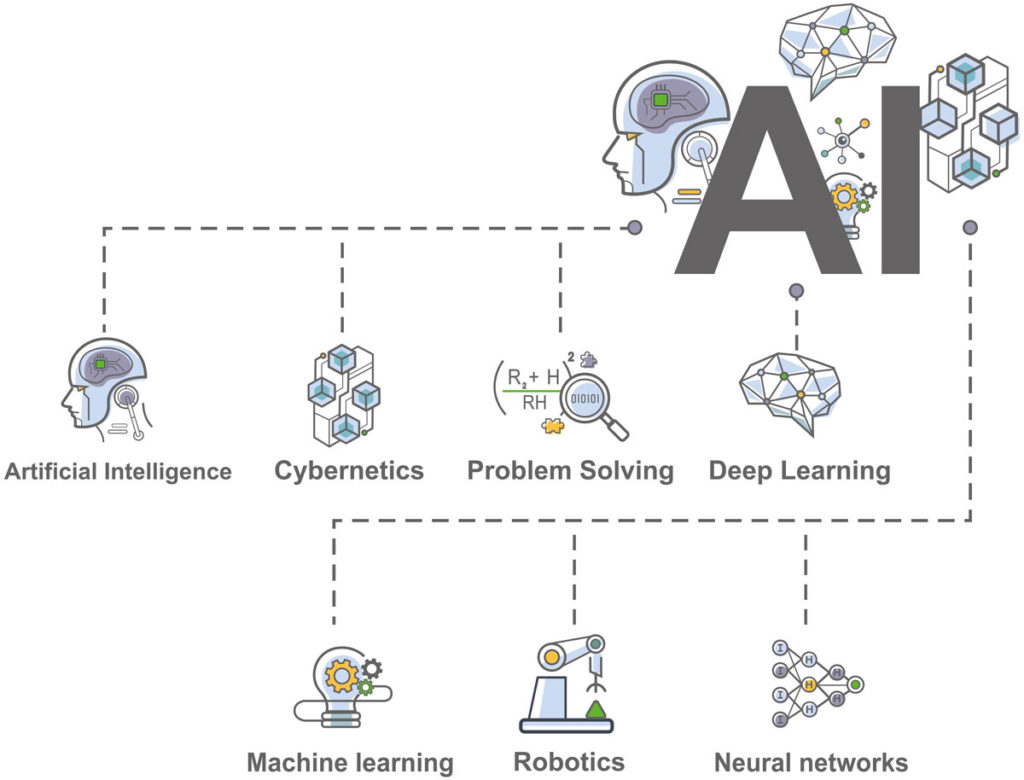Artificial Intelligence (AI) is in everything we do today. It can be used in a lot of businesses and activities. I have written a lot of posts on my blog about Artificial Intelligence https://babin-business-consulting.com/blog . For example, you can find texts about the impact of AI on recruiting, on marketing, on dating, on gamification, on technology or on e-health. However, with all your feedback, it seems to me that I should have started with the basics: what is Artificial Intelligence? Let’s have a look and I hope this will make things a bit clearer for all.
Artificial Intelligence refers to any type of computer or machine (robots, PCs, phones…) ability to do tasks that up until recently would have been done by a human being. In general, we would have expected humans to perform such tasks using their own power of reasoning. Basically, machines simulate human intelligence and gestures thanks to a structured set of commands, algorithms and data. You hear very regularly about strong or weak AI, but this very simply means how strongly machines are programmed to deliver results. Does the AI program possess a narrow range of abilities (weak AI) such as Google assistant, Google translate, SIRI, Cortana or Alexa or does it possess a large range of abilities (strong AI)?

You can find Artificial Intelligence scenarios in many applications such as but not limited to:
– Humanoids or animals’ activities and simulation
– Chatbots and voice recognition
– Image recognition
– Facial recognition
– Computer vision
– Mechatronic (the movement activity – running, walking, jumping… coined from Mechanics and electronic)
– Natural Language Processing
– Sentiment analysis
– …
To make it very simple for all, any application you use is made of lines of programming codes; AI is the same. Codes written for an AI application will follow Neural Networks (like for humans) that mimic the structure of the human brain to summarize very complex information into concrete and tangible results. Codes will need to be trained with a very significant amount of data. Data is at the center of all AI activity and this is very important for anyone who would like to start an AI program or application to start with its data organization. Collect data, organize data, analyze data and make it intelligent are the four steps to ensure success in any AI activity.
Then you will very often hear of terms like Machine Learning. Machine Learning is as its name states, a way to provide examples to machines so it will learn. Examples will show what the expected output of the program should be for any given input. In clear, you show machines what you expect and then the system will explore all possible computer programs to find the one that will most closely generate the expected result.
One element that you would need to know is the fact that machines often adopt the same unconscious biases as humans who build them. This means that when a programmer assumes an output, it is very likely possible that machines will have the same assumption; hence the importance to create guidelines to prevent biases.
In Machine Learning you will also find 4 different types of learning:
– Supervised: where the machines observe a set of scenarios, for example wind is strong today without any rain. The outcome of this is that sail boats go out in the bay. Machines learn rules with the goal to predict the outcomes of unobserved cases. So if in the past, sail boats go out when the wind is strong, in the future machines will predict this scenario. Algorithms can then link to weather sites and learn how many days per month the wind was strong and predict how many days boats have gone out.
– Unsupervised: this is just for machines to observe a set of scenarios without observing outcomes. Machines will then learn patterns that enable them to classify scenarios with similar characteristics. Strong wind can be linked to a category where weather is poor, for example.
– Semi Supervised: a mix of both supervised and unsupervised learning. Machines will observe a set of scenarios, the outcome of these scenarios, learn patterns and learn rules.
– Reinforcement: machines take action to learn a policy. The machines would require feedback on the actions. Humans give feedback yes/no/maybe and machines make a decision.
In conclusion, do not be frightened by terms or by the AI concept. AI and Machine Learning are all about feeding data to an algorithm and getting an output that makes sense.
Humans need to have the upper hand as they are the programmers. They need to ensure they have a fail-safe switch in case machines become out of control. AI should help humans to be augmented. The intention of AI is to manage an extremely large amount of data. Mundane activities will become things of the past for humans. This allows humans to focus on what they do best: think! Ethics in AI is essential to ensure the “human augmented” approach is enforced without any drift into non ethical activities.

